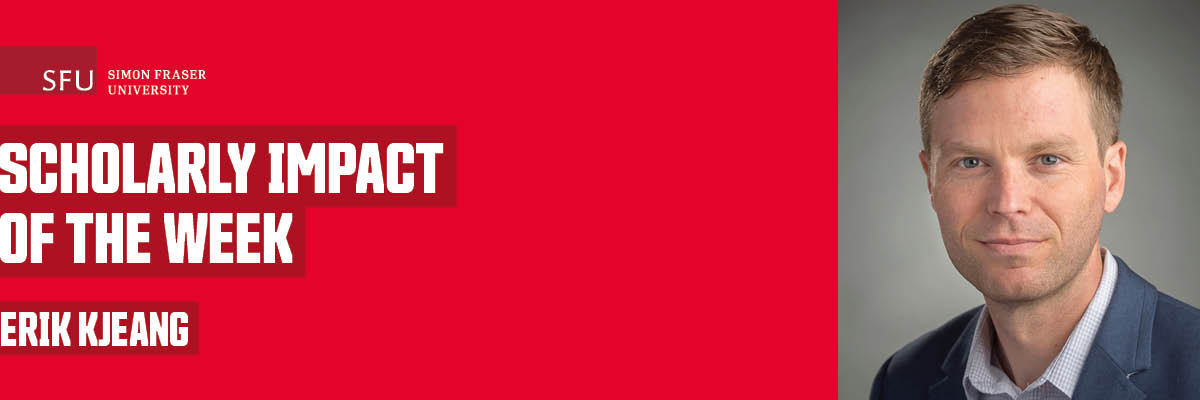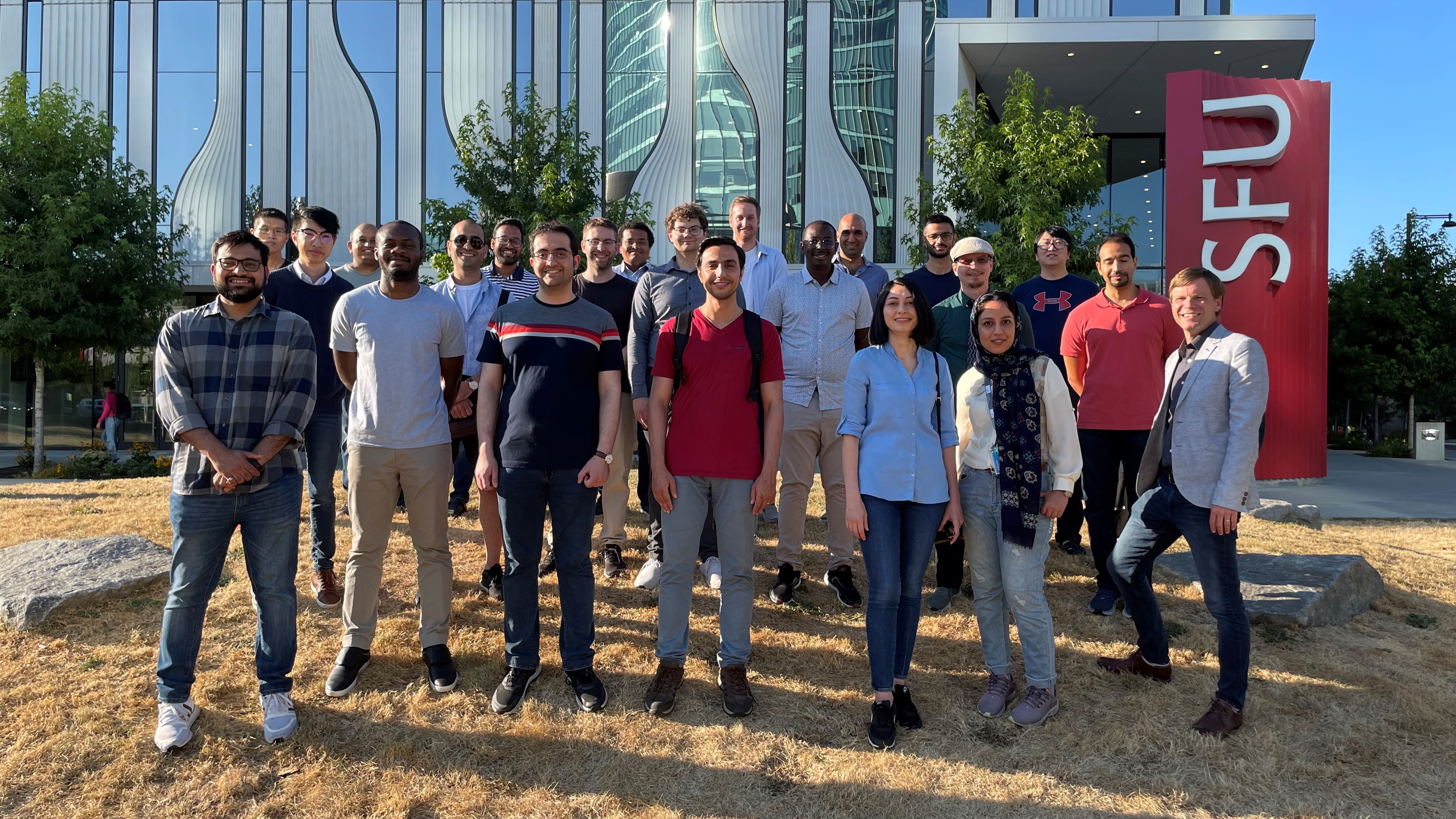
In order to reduce greenhouse gases to net zero by 2050, the world desperately needs reliable and sustainable clean energy options. Developing, testing and commercializing these technologies is the mission of Simon Fraser University’s (SFU) Fuel Cell Research Laboratory (FCReL).
SFU expert in community-centred climate innovation, mechatronic systems engineering professor and Canada Research Chair in Fuel Cell Science and Technology Development Erik Kjeang leads FCReL. His multidisciplinary research applies to hydrogen energy systems, fuel cell technologies, and innovative fuel cell architectures and materials.
Kjeang and his team are working to develop the next generation of efficient, affordable and durable fuel cells for use in electric vehicles, modular power plants and other applications. One of their objectives is improving the polymer electrolyte membrane (PEM) fuel cell—an electrochemical device that generates electrical power by converting energy sources like hydrogen and oxygen into electricity. This green technology creates water as its only byproduct with no harmful emissions.
Creating a product that is ready for market and practical applications requires rigorous testing. The researchers at FCReL have recently been investigating the durability of the membrane electrode assembly (MEA)—a vital component of the PEM fuel cell which enables the electrochemical reaction—in collaboration with Burnaby-based fuel cell manufacturer Ballard Power Systems. Their findings are presented in a two-part series, 4D imaging of chemo-mechanical membrane degradation in polymer electrolyte fuel cells - Part 1: Understanding and evading edge failures and 4D imaging of chemo-mechanical membrane degradation in polymer electrolyte fuel cells - Part 2: Unraveling the coupled degradation mechanisms within the active area.
We spoke with Erik Kjeang about working on developing better fuel cell technologies.
Can you explain the problem(s) you are investigating in these research projects?
Both of these papers talk about the chemo-mechanical membrane degradation in PEM fuel cells which leads to failures in the fuel cell. We are using an in situ 4D visualization technique and testing its capacities to diagnose issues. We want to improve upon current fuel cell technology to make it more durable, long lasting and reliable—and thus more marketable, as well as a better alternative to fossil fuel energy sources. The first paper talks about understanding and evading edge failures in the membrane and the second investigates failure within the active area of an edge-protected cell.
What were the results of your investigations?
After investigating edge failures (part 1) we proposed several fixes, including a more robust polymer electrolyte membrane electrode assembly (MEA) frame design that can endure chemo-mechanical stress. We discovered that membrane edge cracks were not critical to performance loss while active area cracks were the dominating failure. We were able to draw conclusions thanks to the support of non-invasive X-ray imaging of the MEA—applied periodically during its degradation to monitor how it evolves—and we can recommend using the present 4D visualization technique for further testing.
SFU is a member of the Canadian Hydrogen and Fuel Cell Association—a national organization comprised of industry, academia, research agencies and other stakeholders working towards the goals laid out in Canada’s Hydrogen Strategy. Are we on track with advancing the adoption of green hydrogen by 2050? What more needs to be done?
It is anticipated that hydrogen will provide up to 30 per cent of Canada’s energy supply by 2050 in order to reach net zero. Many of the required technologies for hydrogen production, distribution and use already exist and are proven to work. However, much more R&D and investment is needed to scale up these technologies for mass production and use. SFU can best contribute through research partnerships with industry and by educating its next generation workforce. We also need to educate the general public on the benefits of hydrogen energy as a complement to renewable electricity.
The FCReL is engaged in several industry and academic partnerships—can you tell us about some of these?
We are fortunate to be working with partners like Burnaby-based company Ballard Power Systems, a world-leading fuel cell developer and manufacturer. We have partnered with Ballard continuously for the past 14 years—my entire career at SFU—and will keep going until we reach net zero.
We are presently Ballard’s most significant academic research partner and have about a dozen students and postdocs working part time at Ballard labs. For example, we worked with Ballard and the University of Victoria with funding from the Automotive Partnership Canada to develop more durable fuel cell electric buses. We have also developed a unique biodegradable power source—called PowerPAD thanks to a collaboration with professor Neus Sabate (Institute of Microelectronics in Barcelona) and senior research fellow Dr. Juan Pablo Esquivel (University of Washington) funded by the Electrochemical Society and the Bill & Melinda Gates Foundation.
Learn more about the work of the Fuel Cell Research Laboratory (above) on their research page.
SFU's Scholarly Impact of the Week series does not reflect the opinions or viewpoints of the university, but those of the scholars. The timing of articles in the series is chosen weeks or months in advance, based on a published set of criteria. Any correspondence with university or world events at the time of publication is purely coincidental.
For more information, please see SFU's Code of Faculty Ethics and Responsibilities and the statement on academic freedom.